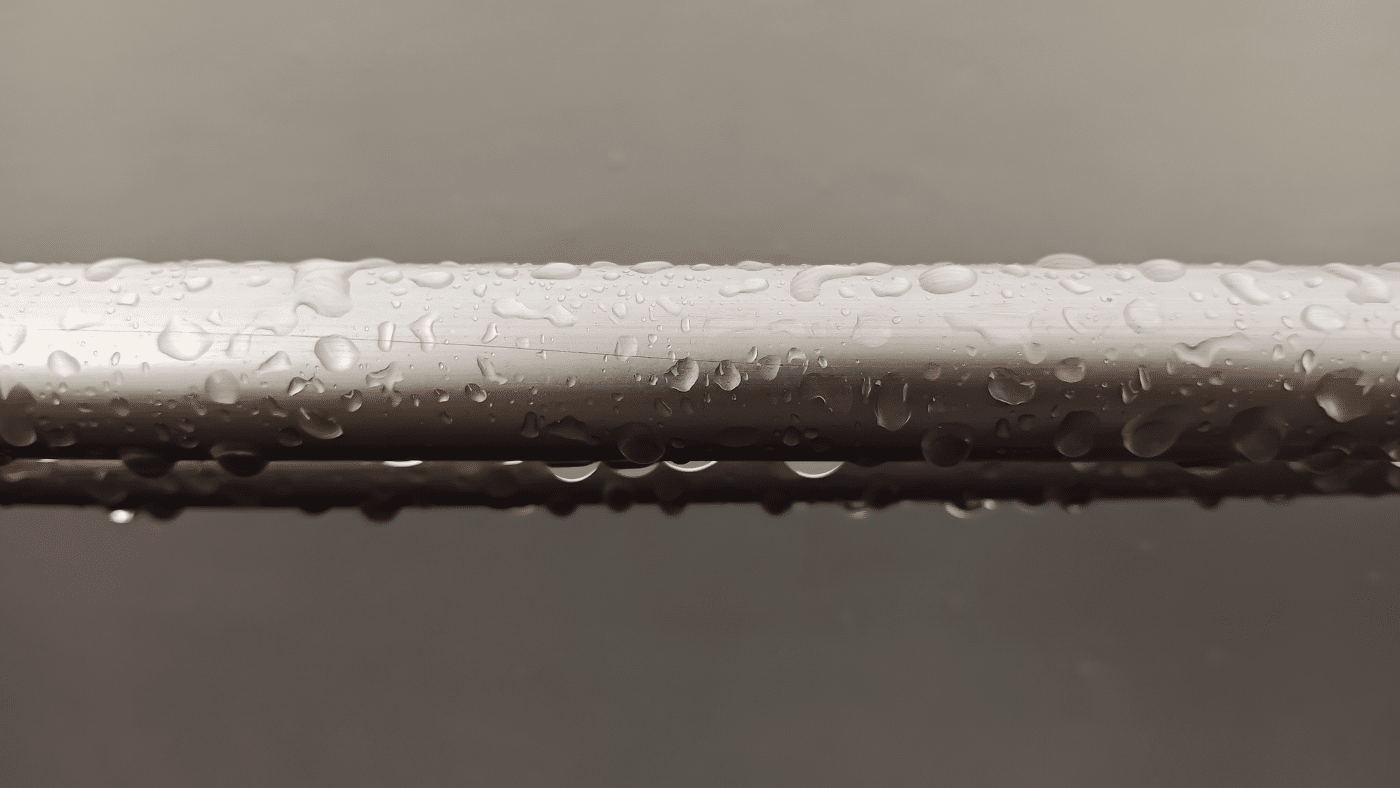Why Care About Condensation?
When summer arrives, bringing high temperatures and humidity, it is unfortunately all too common to see water accumulation on the exterior surfaces of pipes. This water, technically known as “condensation”, and informally known as “sweat,” can become a breeding ground for mold, a slip-and-fall hazard and an eyesore.
VERTEX has no shortage of experience in dealing with condensation claims ranging from single-family homes to large-scale industrial equipment. Whether asked to determine the cause and origin, consulting for a litigated matter, conducting cost of repair estimates, or providing design oversight, we have seen issues related to pipe condensation from a wide range of perspectives.
This blog provides
- an overview of the technical reason pipes condensate
- simple steps that can be taken to prevent condensation
- design calculation guidance
Why Pipes “Sweat”
Water condenses on the surface of chilled water pipes when the temperature of the pipe’s exterior surface is lower than the dew point temperature [1] of the surrounding air. When this condition exists, the water vapor in the air comes into contact with the cold surface of the pipe and loses its heat energy. As a result, the water vapor in the air condenses into liquid form, forming droplets on the pipe’s surface.
The Perfect Conditions for Condensation
Condensation occurs when the pipe’s exterior surface temperature is lower than the dew point temperature of the surrounding air, and the summer months create a perfect opportunity for these conditions.
During the summer months, chillers and cooling towers work to supply cold water to HVAC equipment throughout a building to ensure tenants are comfortable. The cold water running through the pipes results in the pipes themselves being at the coldest temperatures they will be all year.
Likewise, the heat and humidity of summer air increases the dew point temperature to the highest levels of the year.
Prevention is Possible – and Easy
The best way to prevent pipes from condensating is to prevent the ambient air from reaching them in the first place. The simplest way to accomplish this is to wrap the pipes in insulation. Insulating materials such as foam or fiberglass can be used to cover the pipes and minimize the heat transfer between the pipe and the surrounding environment.
Available through your plumbing contractor or local home improvement store, pipe insulation is sold in various lengths, and is designed to fit snugly around different diameters of pipe. It can be cut to length easily to fit the specific application and system’s requirements.
It is important to note that insulation should be installed on pipes with a dry exterior. If insulation is added to pipes that are actively sweating, the insulation will immediately become wet, and its performance will be significantly degraded. Depending on the porosity of the insulation, heat flow can increase up to 300% with a presence of just 20% moisture, by volume. Even 1% moisture, by volume, can increase conductivity by 30%.
Other Considerations
While insulation is the best way to prevent condensation, there are additional steps that can be taken to make the ambient conditions less favorable for condensing:
- Ensure adequate ventilation: good airflow can prevent the air from becoming saturated with moisture, reducing the chances of condensation.
- Install a dehumidifier: reducing the humidity in the space will result in a lower dew point temperature, and less favorable conditions for condensation to occur.
Vertex’s Design Calculator
VERTEX has developed a simple calculator to assist in determining if a system’s operating parameters will lead to conditions where condensation can occur:
Inputs:
- Fluid Temperature (F)
- Ambient Temperature (F)
- Ambient Relative Humidity (%)
- Pipe Diameter (in)
- Insulation Thickness (in)
- Insulation Conductivity (Btu*in/hr*ft2*F)
Outputs:
- Exterior Surface Temperature (F)
- Dew Point Temperature (F)
- Will the pipe condensate? (Y/N)
By understanding the causes of pipe condensation and implementing preventive measures such as insulation, ventilation and dehumidification, it is possible to mitigate the accumulation of water on pipe surfaces effectively. Ultimately, taking these steps will prevent mold growth, minimize slip-and-fall hazards, and maintain the integrity and aesthetics of the pipe system.
If you are interested in learning more, VERTEX’s team of professional engineers has expertise in all aspects of distributed piping system design and maintenance. We are available to analyze your condensation issues and help you identify remedies. We look forward to assisting you! You can contact Vertex at assignments@vertexeng.com or (781) 952-6000.
[1] The dew point temperature is the temperature at which the air becomes 100% saturated with water vapor, meaning it can no longer hold all the moisture in gaseous form. The exact dew point temperature is a function of humidity and temperature.



